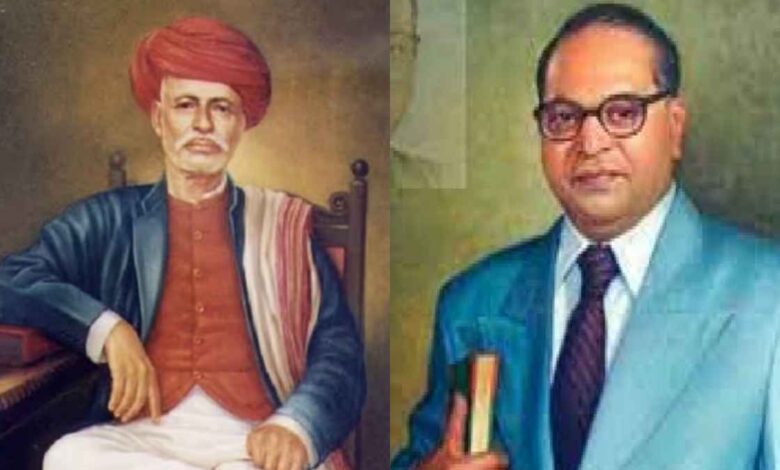Why is Jyotiba Phule called Mahatma who changes Ambedkar’s thoughts? Three gurus were included – Jyotiba Phule Jayanti 2025 Why is Jyotiba Phuele Called The Mahatma Who Changed Ambedkars Thoughts He was amon the Three Gurus Amnr

Jyotiba phule jayanti 2025: India’s leading social reformer, teacher and thinker Mahatma Jyotirao Govindrao Phule was born on 11 April 1827. Jyotiba Phule is called “Dr. Bhimrao Ambedkar Ambedkar’s idea -changing Mahatma” because the work done for his ideology, efforts of social reforms and upliftment of the exploited classes impressed the life and thinking of Dr. Bhimrao Ambedkar with depth. The revolutionary steps that Phule took in the field of caste system, women’s rights and education in the 19th century became a source of inspiration for Ambedkar.
Buyed in three gurus
Ambedkar considered Jyotiba Phule to be one of his three gurus, the remaining two were Gautam Buddha and Kabir. He said this several times in his speeches, such as in his Diamond Jubilee Celebration (1954). Ambedkar had said, “I am a devotee of Gautam Buddha, Kabir and Mahatma Phule and a worshiper of knowledge, self-respect and character.”
Dedication to ‘Who was Shudra’
Ambedkar has given his book “WHO WERE The Shudras?” (1946) dedicated to Phule. In this, he called Phule a “greatest Shudra of modern India” and wrote that Phule made the lower castes realize that he is not a slave of upper castes. This dedication shows that Phule’s ideas shaped the understanding of Ambedkar’s caste system.
Fule’s criticism
Jyotiba Phule strongly criticized Varna system and Brahminism in her book “Ghulamgiri” (1873). He believed that Arya was an invader, who pressed the original inhabitants of India (Shudras and Atishudras) and created a caste system. He considered the Vedas a means of “false consciousness” and blamed the Brahmins for this.
Phule and Ambedkar’s views
Ambedkar also “who was the shudras?” And similar arguments were made in “Annihilation of Caste” (1936). Although he did not fully agree with Phule’s “Arya invasion” theory, he also admitted that the caste system is an artificial structure, which was designed for exploitation. Phule’s thinking became the basis for Ambedkar, which he carried forward with historical and legal arguments.
Phule’s contribution
Phule opened the first girls’ school in Pune in 1848 and made her a teacher by teaching his wife Savitribai. He believed that education can only provide freedom to the exploited classes and women. He advocated the right to equality to people of all castes and religions by creating Satyashodhak Samaj (1873).
Impact on Ambedkar
Ambedkar also considered education to be the biggest weapon of social revolution. He told women of depressed classes in 1927, “I measure the progress of a community with the progress of its women.” This idea was inspired by Phule. Ambedkar insisted on the education of women and Dalits through his organizations like excluded Hitkarini Sabha.
The beginning of Phule and the expansion of Ambedkar
Jyotiba Phule launched the first organized movement of social awareness for Shudras, Atishudras and women. Satyashodhak Samaj opposed Brahminical practices (such as widow-marriage, child marriage) and used the word “Dalit” in a new sense. Bhim Rao Ambedkar carried forward this movement of Phule. While Phule laid the foundation of social reform, Ambedkar took it to constitutional and political level. The provisions of equality and justice in the constitution, such as Article 15 and 17, were the results of Phule’s thinking, which Ambedkar implemented.
Personal experience and inspiration
It is believed that Ambedkar’s father Ramji was a fan of Sakpal Phule. In Ambedkar’s childhood, he must have got information about Phule through friends of Mali community. After Phule’s death (1890), Satyashodhak Samaj weakened, but Ambedkar tried to renovate it. He said, “I am the person who kept the most honest association with Phule.”




